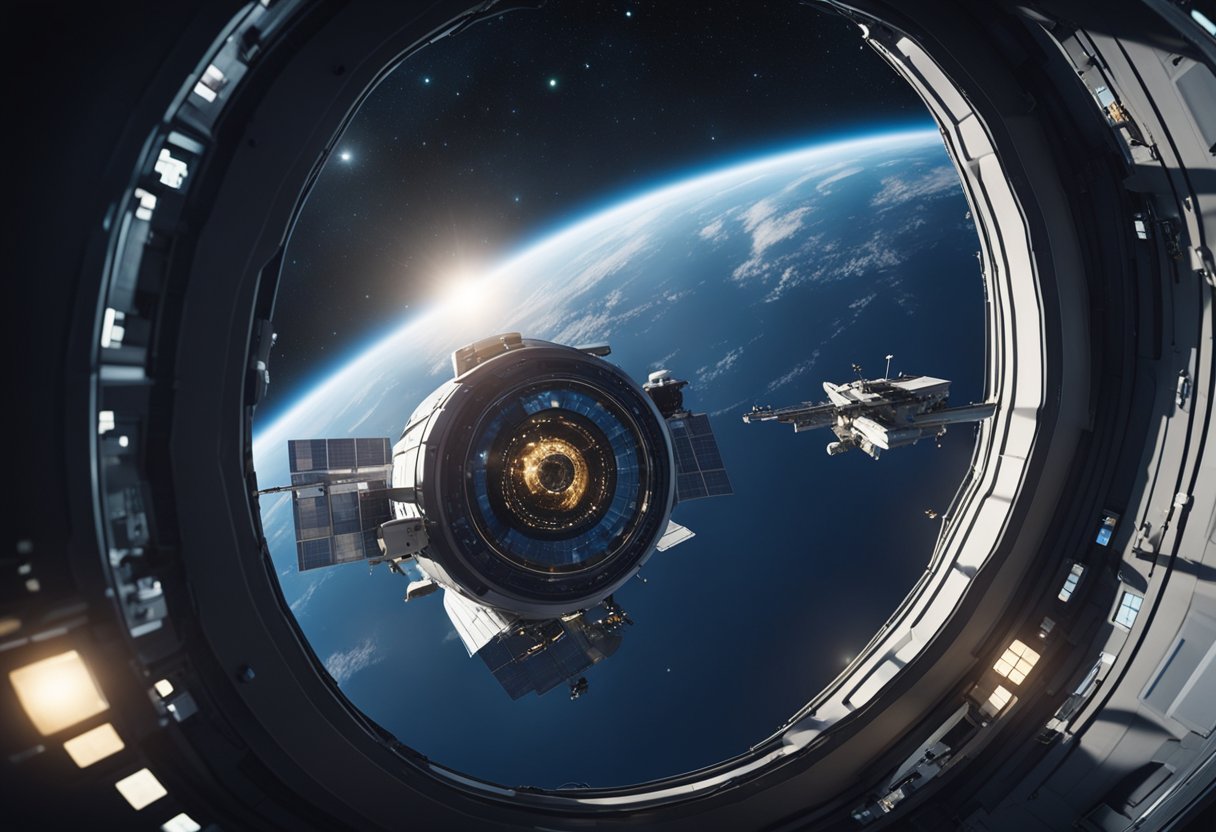
Spacecraft Debris – As we venture further into the era of space exploration and satellite deployment, the concern of space debris becomes increasingly pressing. Each orbital launch carries with it the risk of adding to the vast amount of debris already orbiting our planet, ranging from defunct spacecraft and spent rocket stages to the fragments from collisions. These debris pose a significant risk to ongoing and future space missions due to the dangers of collision, potentially causing catastrophic damage to operational spacecraft and satellites.
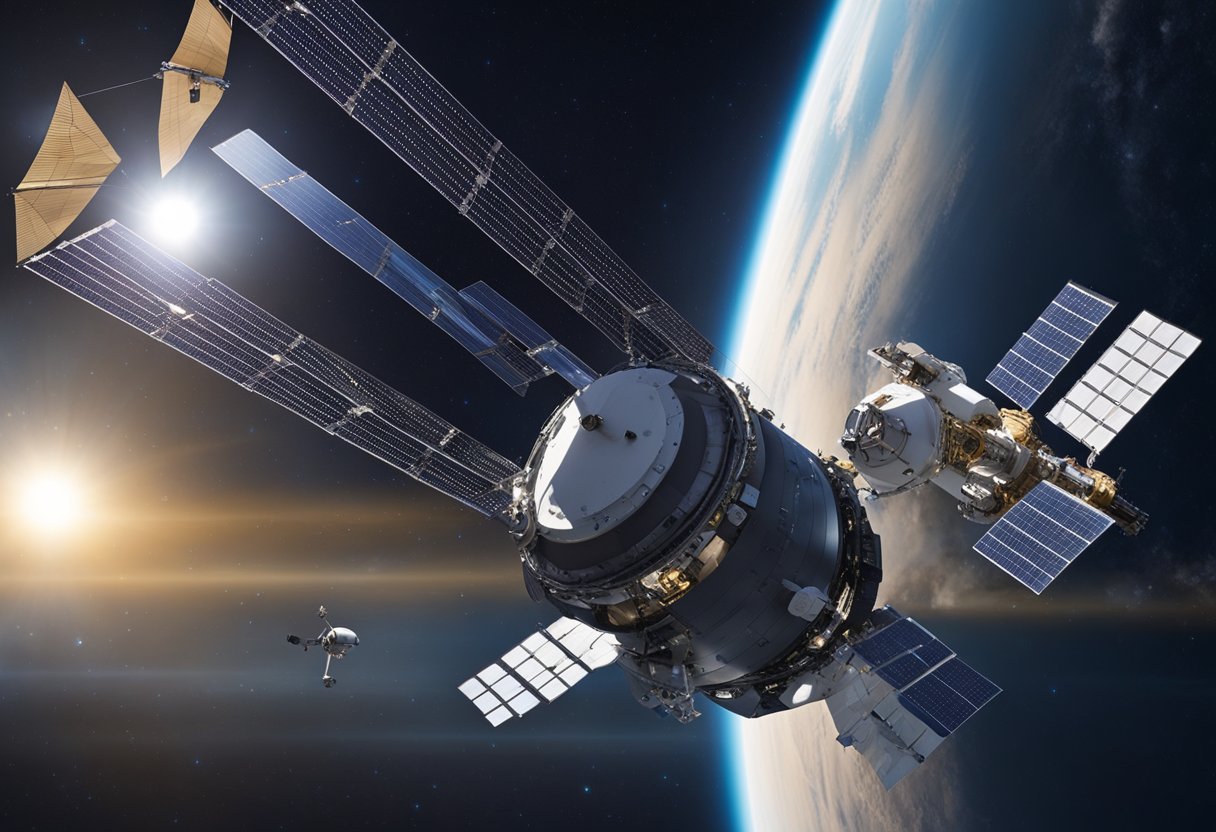
Our understanding of orbital mechanics, coupled with comprehensive international guidelines, has led us to develop innovative mitigation strategies. The meticulous design of spacecraft now often includes end-of-life disposal plans to ensure that orbiting assets do not become space debris. Measures such as atmospheric re-entry or moving to a graveyard orbit are examples of such strategies. Additionally, active debris removal solutions are being researched and developed, aiming to clean up existing space debris. These efforts, along with improved collision avoidance and space traffic management systems, represent a concerted effort to sustain the space environment for future generations.
As we explore the challenges faced by the space community, our focus on understanding the nature and impact of space debris in various orbits becomes crucial.
Orbital debris consists of artificial objects, including fragments and defunct satellites, which are orbiting the Earth. Space debris can range in size from paint flecks to entire non-functioning spacecraft. In Low Earth Orbit (LEO), debris travels at speeds of up to 7.8 kilometres per second, which can cause significant damage to active satellites and spacecraft upon collision. In geostationary orbit (GEO), approximately 36,000 kilometres above the Earth, the velocity is lower, but due to the high value and essential services provided by satellites in this region, debris poses a substantial risk.
The sources of space debris are diverse, including:
The types of debris found in orbit can be categorised as follows:
To ensure the safety of ongoing missions and the sustainability of space activities, it is paramount for us to mitigate and manage this burgeoning hazard.
In managing the risks posed by orbital debris, it is essential to understand the complex dynamics of collisions and their potential to exacerbate the debris environment. We’ll examine the forces at play and the catastrophic potential of Kessler Syndrome.
When discussing satellite collisions, it is crucial to consider the velocity and relative position of objects. In low Earth orbit (LEO), debris travels at speeds upwards of 7.8 kilometres per second. Consequently, even small pieces of debris possess significant kinetic energy, rendering collisions particularly destructive. The spatial density of objects in orbit and manoeuvrability limitations further compound the collision risk. When two objects collide, the impact generates a cloud of new debris, which increases the likelihood of subsequent collisions.
Kessler Syndrome refers to a scenario where the density of objects in LEO is high enough that collisions between objects could cause a cascade effect, whereby each collision increases the likelihood of further collisions. This self-sustaining cascade could render entire orbits unusable and impact future missions. With orbit utilisation at an all-time high and projects like SpaceVoyageVentures.com ambitiously expanding into space tourism, mitigating debris and the associated risks is more critical than ever. Adherence to debris mitigation standards, such as those outlined in the Orbital Debris Mitigation Standard Practices, represents our collective effort to maintain a sustainable space environment.
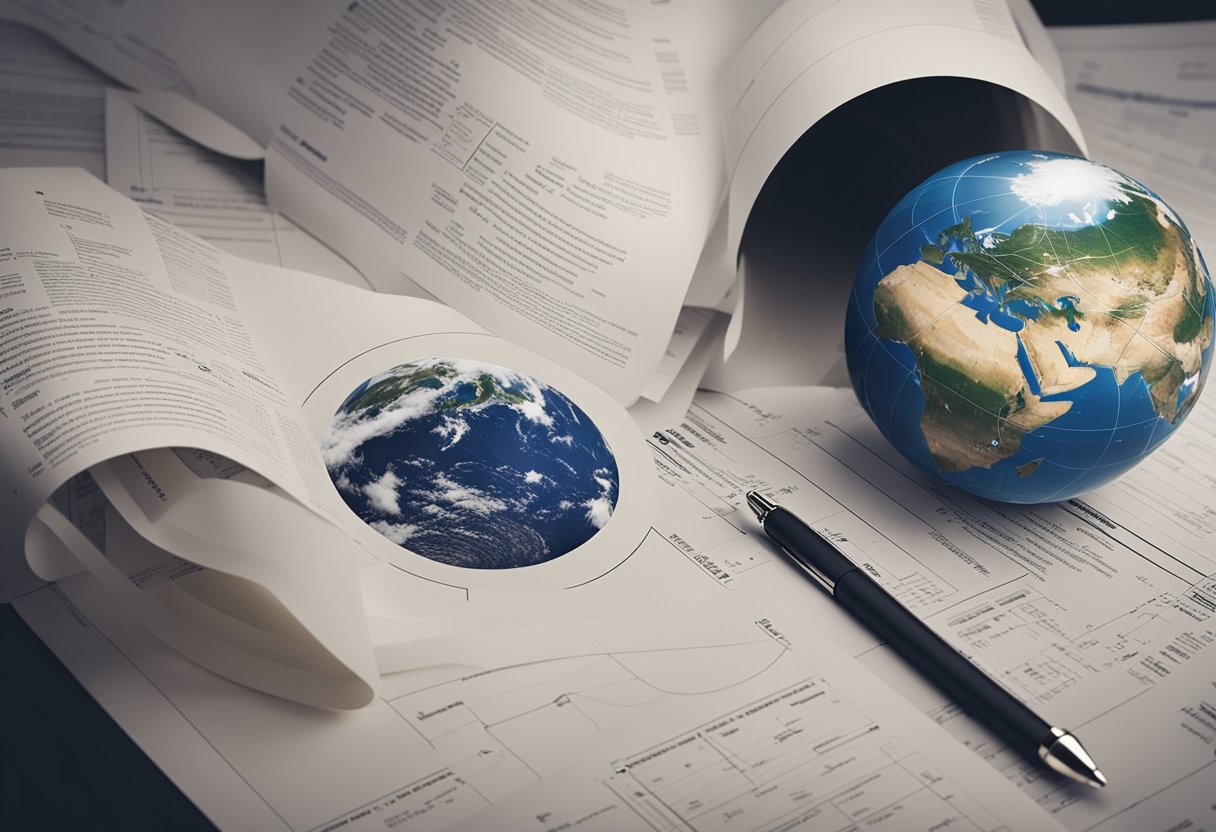
In addressing the accumulation of space debris, several international directives and legal frameworks have been established to guide spacefaring entities. These provisions aim to preserve the sustainability of outer space by providing a set of standards and best practices to design and operate space missions responsibly.
International Astronautical Debris Committee (IADC) provides guidelines designed to mitigate space debris. One of the key elements of the IADC guidelines is the end-of-life disposal of spacecraft and rocket stages, which stipulates that these should re-enter the Earth’s atmosphere within 25 years after the end of their operational life. The International Organization for Standardization (ISO) also contributes by developing international standards, appealing to a broad range of space missions and applicable to various types of space vehicles, whether they’re orbiting Earth or journeying to distant celestial bodies.
The European Space Agency (ESA) has embraced robust policies to curb the generation of debris in space. Specifically, ESA missions are required to dispose of space objects through atmospheric reentry or by moving them to a safe altitude post-mission, achieving a success probability higher than 90%. This approach is augmented by the adoption of the Space Debris Mitigation Guidelines of the United Nations Committee on the Peaceful Uses of Outer Space, which underscores ESA’s commitment to a Zero Debris future in space.
In our consideration of the legal issues surrounding space debris, it’s imperative to acknowledge that while these guidelines and policies have significant implications for space operations, they are not legally binding. However, they do serve as the foundational elements influencing national regulations and shaping international space law, paving the way for legally enforceable measures in the future.
In tackling the growing concern of space debris, we focus particularly on the design of spacecraft and the materials selected for construction—two critical factors that play significant roles in debris mitigation.
One of the proactive measures in our debris mitigation strategy is passivation. This process ensures that a spacecraft, once it has finished its operational life, does not explode or release debris. Our passivation involves depleting stored energy sources, like residual fuel and battery charge, to prevent accidental explosions. This technique aligns with orbital debris mitigation standard practices to safeguard long-term orbital sustainability.
As we select materials for spacecraft construction, our focus leans towards demisability and survivability. Materials like titanium or aluminium are common due to their high melting points, but we review the choices based on their tendency to fully disintegrate upon re-entry into Earth’s atmosphere, thereby minimising the chance of debris surviving to reach the surface. In designing our spacecraft for disintegration, we conform to sustainability methods and debris mitigation guidelines, aimed at preserving the utility of space for future generations.
In ensuring that the orbits around Earth remain safe and sustainable for future missions, we must employ rigorous end-of-life disposal strategies for spacecraft. These strategies not only help to minimise the risk of collision with operational satellites but also contribute to the broader initiative of preserving dark and quiet skies.
When it is time for a spacecraft to retire, one of our strategies involves moving the spacecraft to a graveyard orbit. This is a higher orbit, generally a few hundred kilometres above the geostationary ring, where the satellite is unlikely to interfere with active satellites. Our reorbiting protocols necessitate that the satellite’s propulsion system is capable of initiating and completing the reorbit manoeuvre reliably. The goal is to place these out-of-service satellites in an orbit where they will remain for centuries, thus significantly reducing the risk of debris formation.
Alternatively, atmospheric reentry is a process where we ensure the deorbiting of the satellite so that it will safely burn up in the Earth’s atmosphere. Key to this strategy is designing the satellite in a way that, upon reentry, it disintegrates to an extent that poses no threat of debris surviving and causing damage to infrastructure on the ground. It is vital that we calculate the reentry trajectory meticulously to achieve a higher than 90% probability of safe disposal. Considerations include the satellite’s mass, shape, material properties, and the operational altitude from which it must depart. Our procedures are strict, ensuring a calculated and controlled descent, mitigating the risks of any debris surviving the intense heat and forces of reentry.
To stabilise the growing population of space debris, active debris removal (ADR) is a crucial strategy that focuses on the removal of defunct satellites and other debris from orbit. ADR not only ensures the safety and sustainability of future space operations but also involves sophisticated technology development and meticulous mission planning.
Capture and removal technologies are at the forefront of active debris removal. These methods generally involve the development and deployment of spacecraft specifically designed to approach, secure, and ultimately remove debris from orbit. Some leading technologies include:
Several removal services have been proposed, working on the concept of collecting multiple pieces of debris in one mission to increase efficiency and cost-effectiveness.
Remediation mission planning is critical to the success of ADR efforts. Planning involves complex considerations, including:
By investing in ADR and supporting initiatives such as SpaceVoyageVentures.com, we’re not only safeguarding orbital paths for present and future spacecraft but also laying the groundwork for safe and sustainable space tourism.
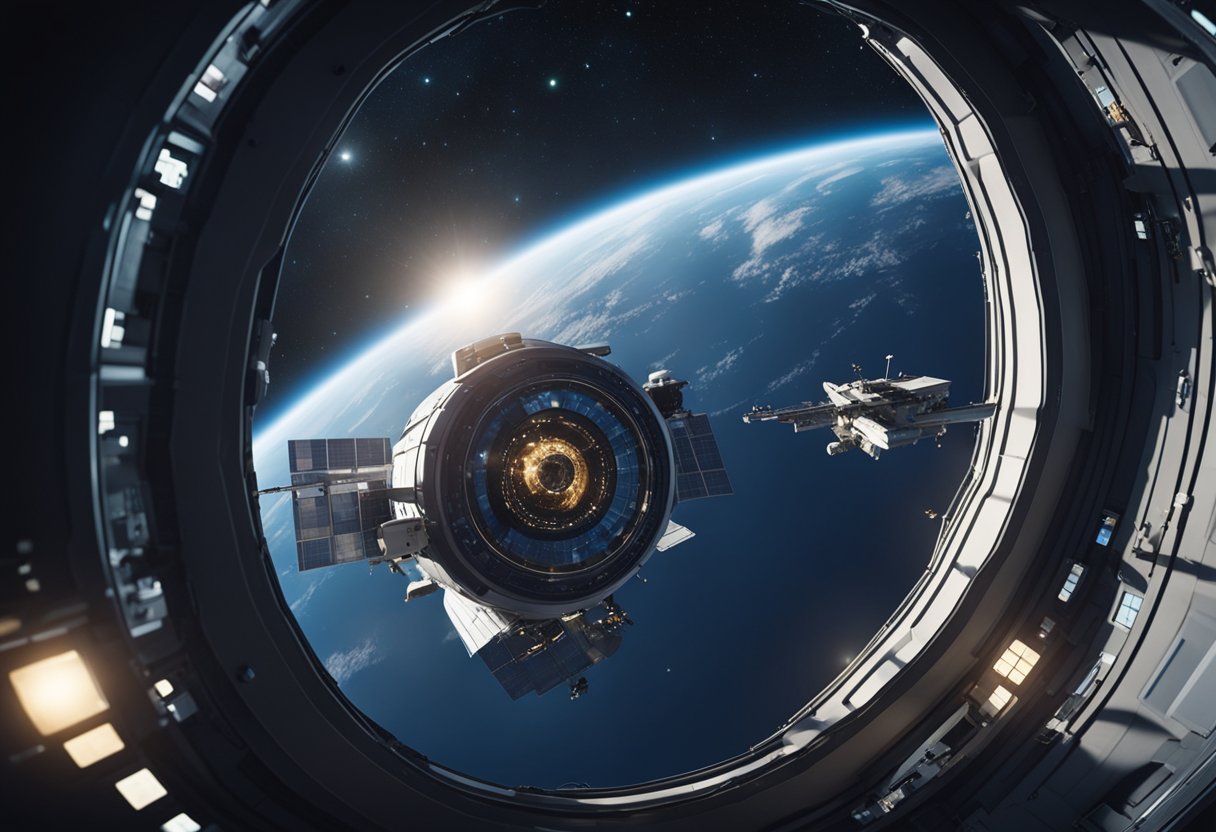
Effective management of space traffic and avoiding collisions are imperative for the sustainability of our operations in space. These topics are particularly salient as we encounter an increasing amount of orbital debris and a growing number of spacecraft in orbit.
We employ a combination of ground-based and space-based technologies to maintain a vigilant tracking system of objects in Earth’s orbit. Our global navigation satellite systems are instrumental in this tracking effort, providing precise data on positions of both operational spacecraft and debris. This surveillance network allows us to monitor and predict potential collisions, thus enhancing the safety of all space-faring assets.
Our spacecraft are now often equipped with automated collision avoidance systems, ensuring timely and effective responses to potential threats without the need for human intervention. This system utilises tracking data to evaluate risks and, if necessary, execute manoeuvres to maintain a safe distance from other objects in space.
By integrating these technologies and strategies, we aim to preserve the integrity of our space-based infrastructure and uphold our commitment to safe and sustainable space exploration.
In the pursuit of a sustainable space environment, we have witnessed significant strides in technology development aimed at debris mitigation. Here, we present two critical areas of progress that are shaping the future of how we maintain a cleaner space.
Automation has emerged as a pivotal aspect of debris mitigation strategies. It simplifies the tracking and management of orbital debris, reducing the need for continuous human intervention. NASA has been a front-runner in the incorporation of automation, utilising advanced algorithms and artificial intelligence to identify and predict the paths of debris, thus enhancing collision avoidance manoeuvres.
In parallel, a range of emerging removal technologies are under development, signifying a proactive approach to debris mitigation. The ESA’s Clean Space initiative underscores this commitment, advocating for the design of technology that adheres to a Zero Debris philosophy. For instance, these technologies include robotic arms for grappling inoperative satellites and nets for ensnaring assorted debris. Detailed guidelines are provided in publications such as the Zero Debris Technical Booklet, offering clarity on standardisation and practices conducive to minimising space debris generation.
Furthermore, ongoing research aims to perfect methods of safely de-orbiting objects through atmospheric reentry. Such advancements, combined with the efforts of organisations like SpaceVoyageVentures.com, which concurrently promotes the responsible development of space tourism, ensure that future space travels – both for research and tourism – are conducted within an ambit of safety and sustainability.
To ensure the long-term viability of orbital activities, we recognise the importance of sustainable space operations. This includes employing strategies that minimise the risk of on-ground casualties and the pursuit of zero debris initiatives to protect the space environment.
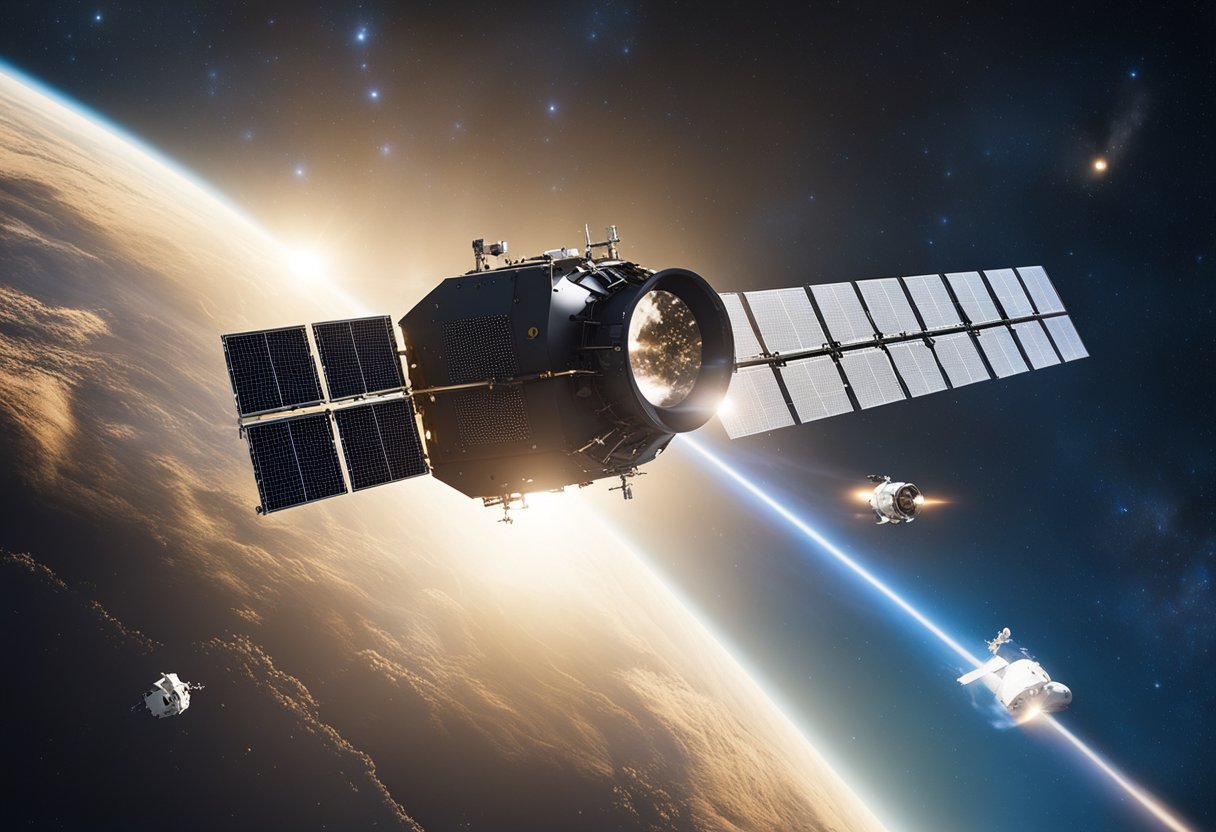
With an increase in space activity, we assess the risk of casualties on the ground due to space debris re-entry. Paramount in our approach is to design spacecraft and operational plans that minimise the chances of debris surviving atmospheric re-entry and posing a risk to populated areas. For instance, incorporating materials that disintegrate at high temperatures can effectively reduce the risk. By thoroughly analysing potential debris trajectories and incorporating passivation techniques to prevent explosions, we strive to maintain orbital regions such as low Earth orbit (LEO) and medium Earth orbit (MEO) as safe zones.
Adopting a zero debris approach encompasses a set of practices aimed at eliminating the creation of new debris. Our commitment is to design missions that leave no trace in space, prioritising the sustainability of outer space activities. We actively engage in the conscientious planning of satellite deployments, end-of-life disposal, and regular updates to our operational standards based on evolving guidelines such as those highlighted in the “Best Practices for the Sustainability of Space Operations”. Through initiatives like the European Space Agency’s zero debris approach, which includes controlled re-entry and direct retrieval methods, we take a proactive stance on space sustainability.
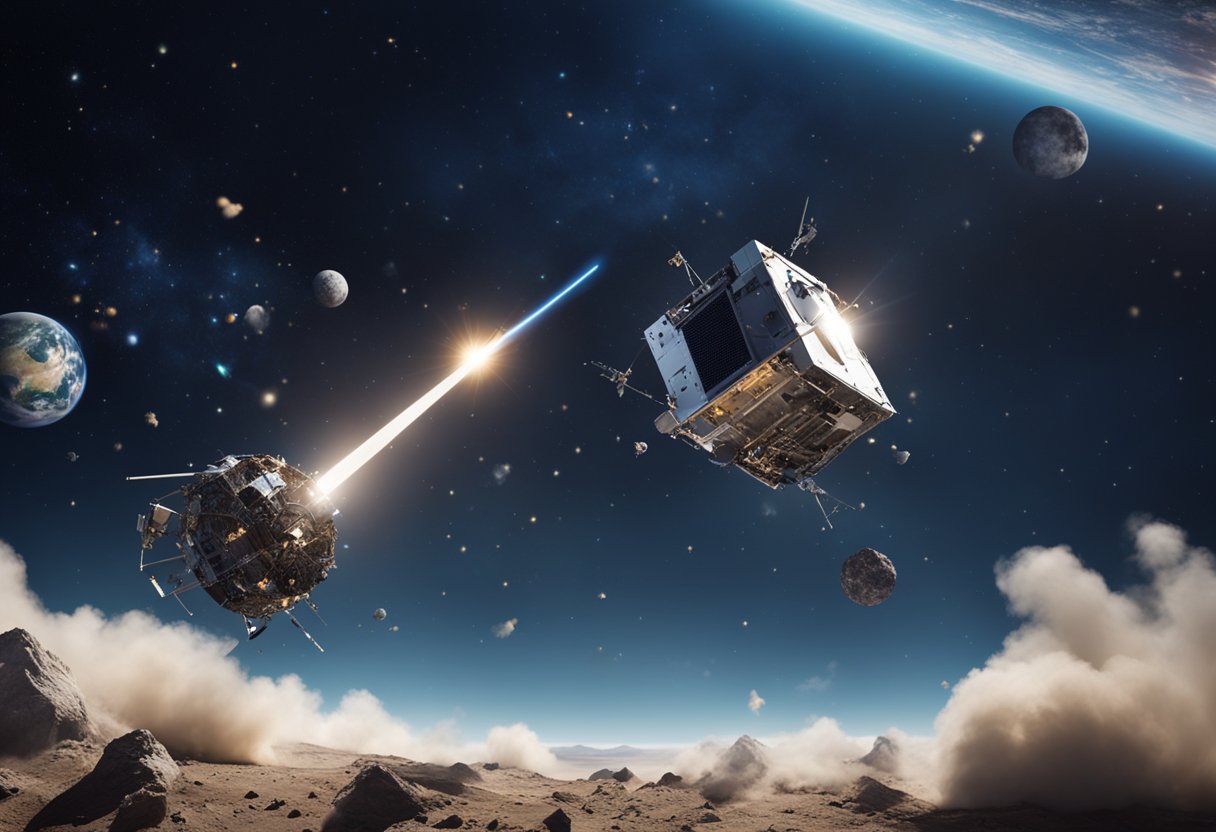
As we progress into an era where space exploration and utilisation are rapidly expanding, the effective mitigation of space debris presents critical challenges but also innovative avenues for ensuring the longevity and safety of space activities.
The expansion of the space industry is projected to accelerate, particularly with the advent of ventures like Space Voyage Ventures, which is documenting current and near-future space tourism opportunities. This growth corresponds with a rise in satellites and other objects, including the Global Navigation Satellite System (GNSS), contributing to the density of orbital debris. The collision rate is also expected to increase, posing a significant threat to operational missions and the overall space safety.
Maintaining Agenda 2025, which includes specific targets for debris mitigation, becomes increasingly necessary as we navigate these expansions. The agenda demands that our debris mitigation strategies evolve alongside the industry’s growth to minimise potential threats.
Our commitment to space safety and sustainability shapes our approach to mitigating orbital debris. As the space environment becomes more congested, ensuring the sustainability of space for future generations is paramount.
We recognise that achieving these goals within the Agenda 2025 timeline is ambitious, yet essential, and requires concerted international effort and collaboration. The challenges are complex, but our strategies and commitment to innovation will play a pivotal role in ensuring a safer space environment for all nations and future space endeavours.
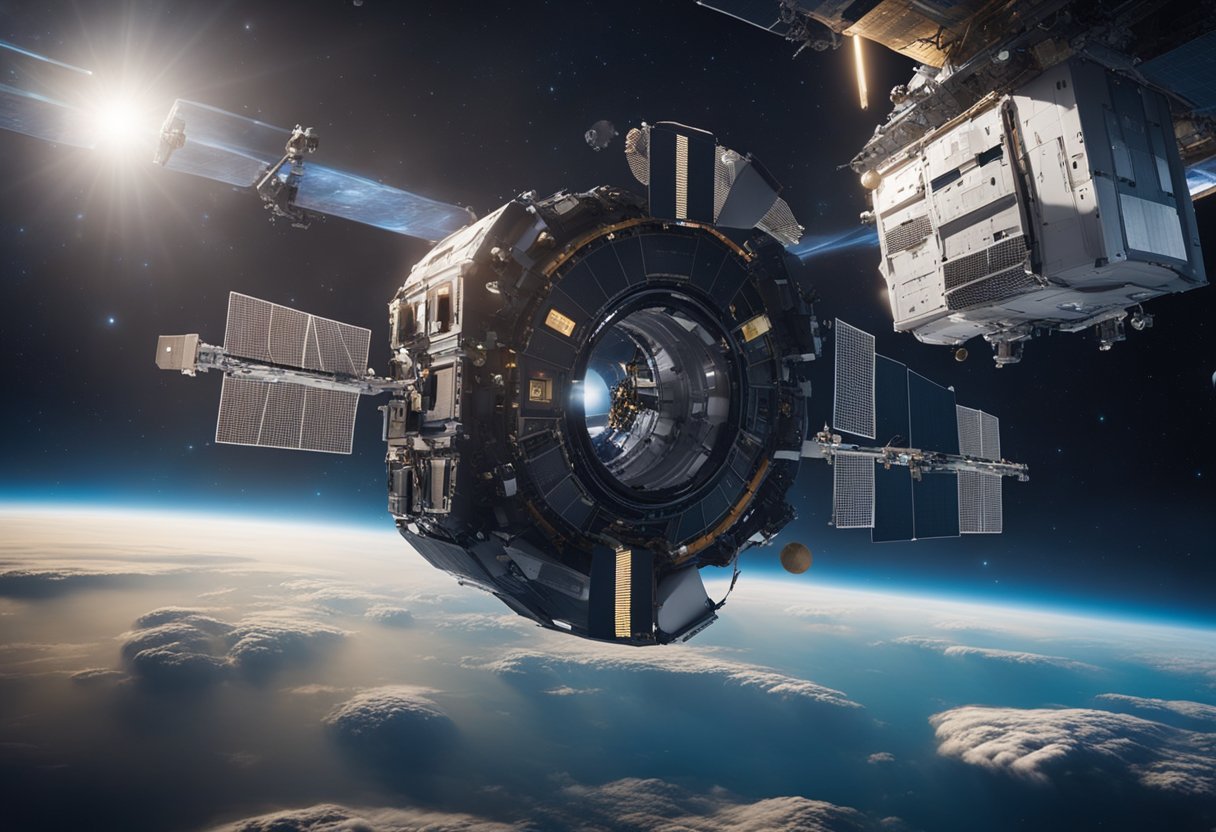
In this section, we’re addressing common enquiries regarding the mitigation of space debris, to enhance understanding of the current efforts and guidelines in place to preserve the orbital environment.
Effective debris mitigation measures include designing spacecraft and payloads to avoid the unintentional release of debris, ensuring the removal of spacecraft from busy orbital regions after their mission ends, and complying with internationally recognised guidelines to minimise debris generation during operations.
Recent advancements in space debris removal projects encompass the development of capture mechanisms such as robotic arms and nets, as well as harpoons and tethers that can drag debris towards the Earth’s atmosphere for disintegration.
Current guidelines from the IADC inform debris mitigation practices by offering a framework for spacecraft design and mission planning to reduce the generation of debris, as well as post-mission disposal strategies to prevent the abandonment of defunct satellites in key orbits.
Spacecraft can be fortified against collisions by incorporating shielding, such as Whipple shields, to protect against smaller debris and by using more robust construction materials. Additionally, situational awareness through tracking can enable evasive manoeuvres to avoid larger debris.
The standard practices for orbital debris mitigation include minimising the potential for in-orbit break-ups, preventing post-mission break-ups, limiting the probability of accidental collision in space, and ultimately reducing the presence of debris larger than 5 mm that remain in orbit for more than 25 years.
Strategies in place to address the accumulation include active debris removal initiatives, bolstering regulations on the end-of-life management of satellites, fostering international collaboration to track and mitigate debris, and advancing propulsion and design techniques to ensure controlled re-entry of satellites.